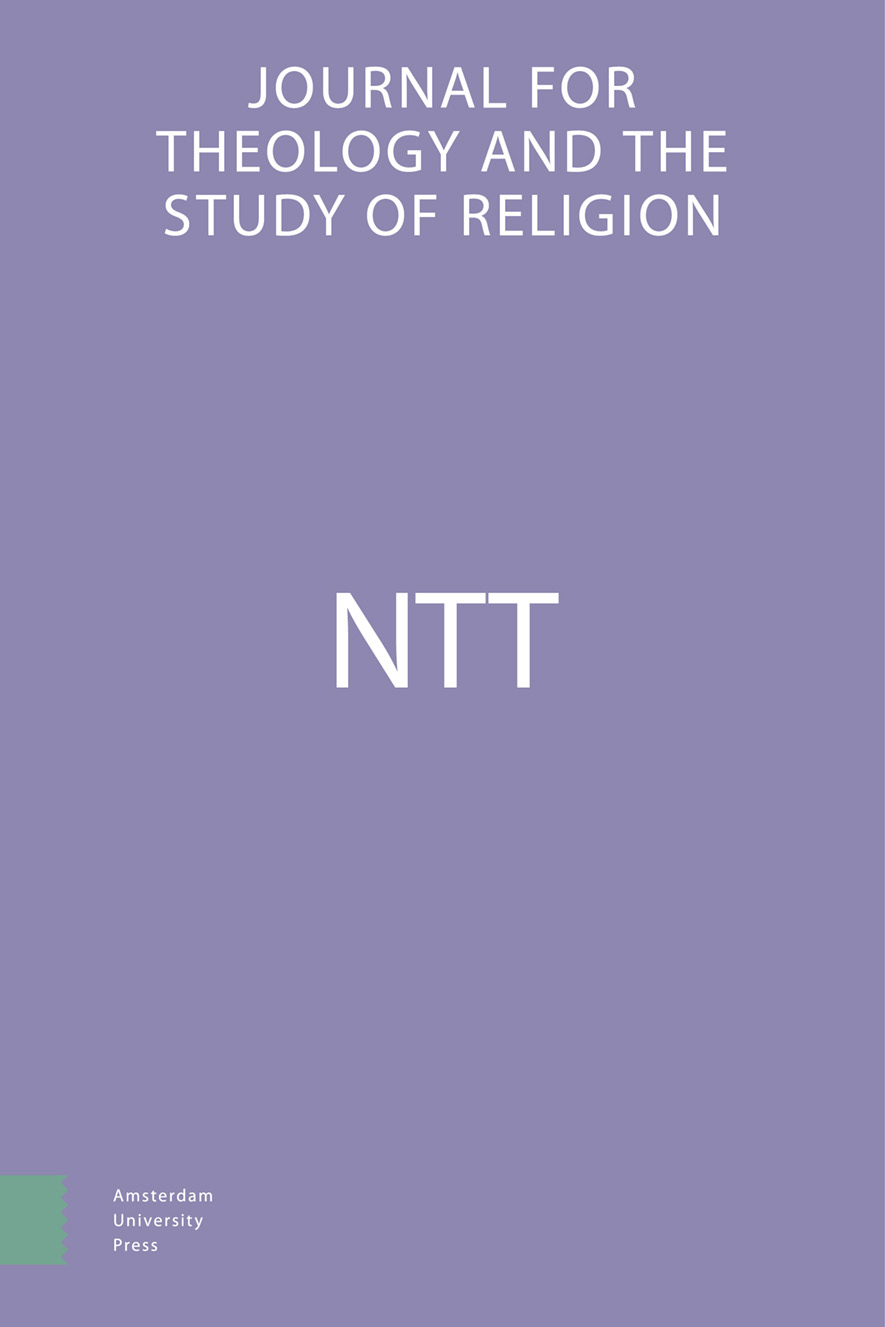- Home
- A-Z Publicaties
- NTT Journal for Theology and the Study of Religion
- Previous Issues
- Volume 72, Issue 4, 2018
NTT Journal for Theology and the Study of Religion - Volume 72, Issue 4, 2018
Volume 72, Issue 4, 2018
-
-
De zwerftocht van een agrafon
Meer MinderDoor Evert van den BergAbstractIn his collection Oostersch: Verzen naar Perzische en Arabische dichters (‘Oriental: Verses after Persian and Arabic poets’), published in 1924, the Dutch poet J.H Leopold (1865-1925) included his poem ‘Jezus, die door de wereld ging’ (‘Jesus, who went through the world’). It ends with an agraphon, or saying, ascribed to Jesus but not recorded in any of the biblical gospels. The standard edition notes that the poem can be traced back, via successive translations, to a verse by the Persian poet Nezâmi (ca. 1200). This contribution shows that the agraphon is widespread in Persian literature and that it in all likelihood finds its origin in the eighth or ninth century in a Sufi milieu. The poem surfaces as early as 900 in Hindu India and in a Jewish context in Spain before 1200. So, agrapha can throw light on interreligious text exchange in the Middle Ages. More recently, in 1941 the Greek poet Sikelianos rewrote the poem in view of his situation in Athens. The composer Tavener has adapted the text for his composition Agraphon (2001).
-
-
-
Herinnering en hoop in monastieke stervensverhalen
Meer MinderDoor Thomas QuartierAbstractThe ideal of self-loss from monastic tradition seems to contradict the continuing bond of contemporary individuals with their beloved ones after death. This leads to the question how prospective hope on a hereafter and retrospective remembrance of the life of the deceased can be combined and open a perspective on eternity. Furthermore, one can ask how a form of spirituality that is directed to self-loss already during earthly life, can contribute to the experience of a person in his or her last days by being fully present during the dying process. Departing from these contemporary questions, the article presents dying-narratives from the first centuries of Christian monastic tradition. From these dying-narratives we learn that remembrance does not exclusively refer to the biography of the deceased. Furthermore, hope on a hereafter can gain more personal relevance by emotional commitment. The absence of the deceased can be filled symbolically, e.g. by experiencing the moment of death or getting a task from him or her. In this way, dying-narratives about early monks and nuns can teach us how to die (ars moriendi) and contribute to making sense of death and avoiding one-sidedness, also today, inside and outside monasteries.
-
-
-
Adolf Harnack, Das Wesen des Christentums (1900)
Meer MinderDoor Arie L. MolendijkAbstractAdolf Harnack’s Das Wesen des Christentums (1900) sold more than 100.000 copies. The first English edition What is Christianity? appeared already in 1902. In the preface, the church historian and liberal theologian Harnack (1851-1930) characterized the book as a ‘short and plain statement of the Gospel and its history’. The present article explores Harnack’s career, the defining historical approach (historicism), his characterisation of the essence of Christianity (‘God and the human soul, the soul and its God’), and the reception of Das Wesen des Christentums (Alfred Loisy, Leo Baeck). Finally, its strengths (a contextualised, thick description of the Christian faith) and weaknesses (its hegemonial liberal stance) are outlined.
-
Volumes & issues
-
Volume 78 (2024)
-
Volume 77 (2023)
-
Volume 76 (2022)
-
Volume 75 (2021)
-
Volume 74 (2020)
-
Volume 73 (2019)
-
Volume 72 (2018)
-
Volume 71 (2017)
-
Volume 70 (2016)
-
Volume 69 (2015)
-
Volume 68 (2014)
-
Volume 67 (2013)
-
Volume 66 (2012)
-
Volume 65 (2011)
-
Volume 64 (2010)
-
Volume 63 (2009)
-
Volume 62 (2008)
-
Volume 61 (2007)
-
Volume 60 (2006)
-
Volume 59 (2005)
-
Volume 58 (2004)
-
Volume 57 (2003)
-
Volume 56 (2002)
-
Volume 55 (2001)
-
Volume 54 (2000)
-
Volume 53 (1999)
-
Volume 52 (1998)
-
Volume 51 (1997)
-
Volume 50 (1996)
-
Volume 49 (1995)
-
Volume 48 (1994)
-
Volume 47 (1993)
-
Volume 46 (1992)
-
Volume 45 (1991)
-
Volume 44 (1990)
-
Volume 43 (1989)
-
Volume 42 (1988)
-
Volume 41 (1987)
-
Volume 40 (1986)
-
Volume 39 (1985)
-
Volume 38 (1984)
-
Volume 37 (1983)
-
Volume 36 (1982)
-
Volume 35 (1981)
-
Volume 34 (1980)
Most Read This Month


